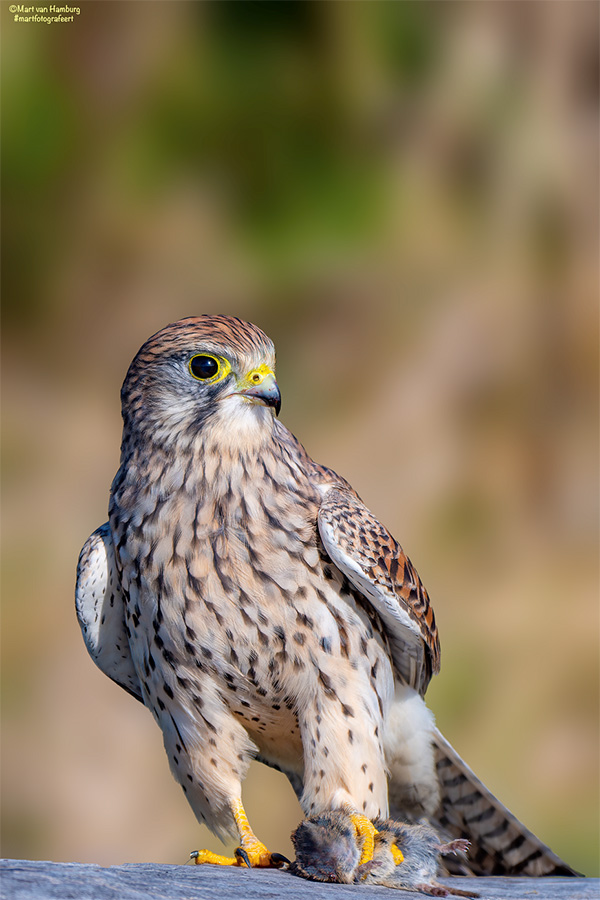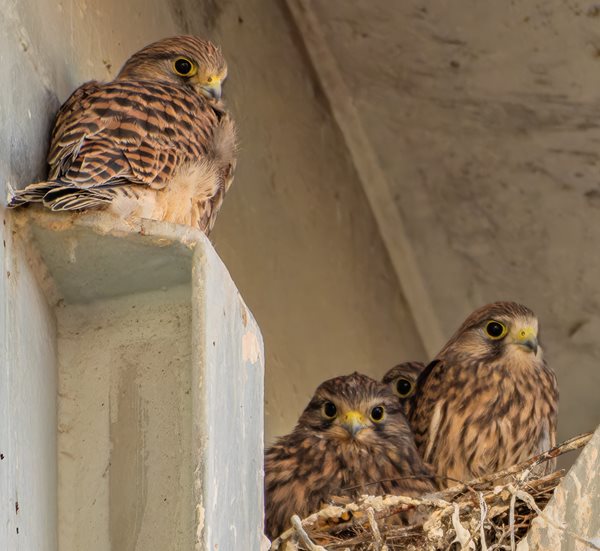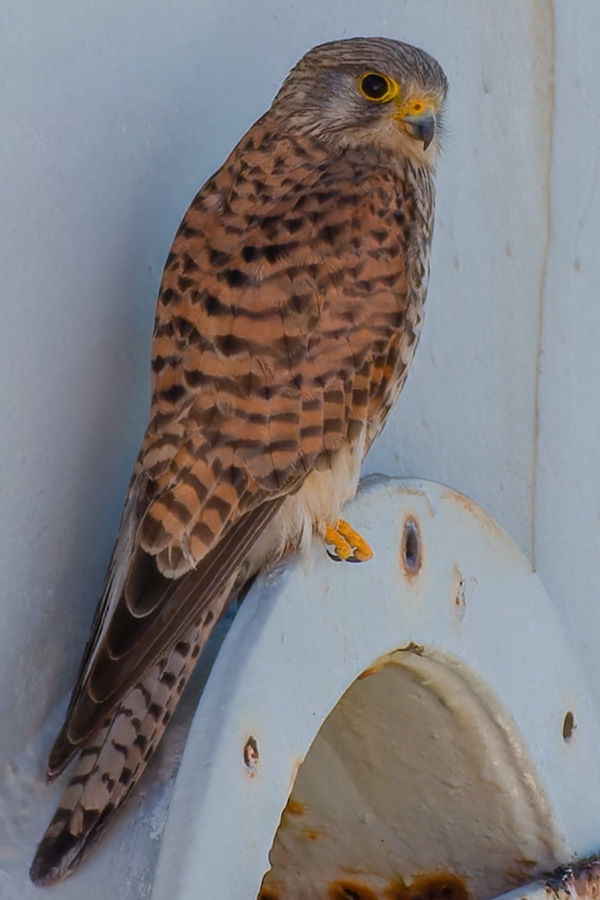Every day, our Rotterdam operations site is busy packing and moving the refined borates our customers need. But if you visit this U.S. Borax site during the summer months and look closely, you might notice something else hard at work: Kestrels.
 The kestrels have caught the eye and camera lens of Logistics Coordinator Mart Van Hamburg. His enthusiasm and stunning photography of these endangered birds has led to greater awareness and respect for the wildlife that surrounds our operations every day.
The kestrels have caught the eye and camera lens of Logistics Coordinator Mart Van Hamburg. His enthusiasm and stunning photography of these endangered birds has led to greater awareness and respect for the wildlife that surrounds our operations every day.
More awareness helps keep the kestrels safe and undisturbed by operations below. That’s allowed for some special moments—most recently four young kestrels embarked on their first flight.
Return visitors
Mart and a co-worker first noticed a pair of kestrels nesting in an abandoned pipe on the side of an onsite building. That was almost 20 years ago. Since then, the birds have returned from migration each year to make nests and breed at Rotterdam.

Photo courtesy of Mart Van Hamburg, all rights reserved
These birds are called “common” or “European” kestrels. The Netherlands is home to a variety of bird species, and kestrels are one of the country’s smallest birds of prey.
Kestrels are a type of falcon that typically live for 15 years. Mart says that considering their lifespan, the kestrels you’ll see at Rotterdam today are likely the descendants of the first birds to call our Netherlands site home.
Over the years, the kestrels have nested in various locations on site, but they’ve always built in high places, beyond the reach of our employees.

Photo courtesy of Mart Van Hamburg, all rights reserved
Kestrels face extinction threat
Kestrels are an endangered species and have red list protection status in the Netherlands. Habitat loss and major changes to agricultural processes threaten kestrel populations.
That’s why our team is not only increasing awareness of the birds onsite but also introducing a site-specific operating standard that identifies potentially critical risks to the kestrels’ habitat at Rotterdam.
Enacting a standard like this can also positively impact other birds that live nearby. Mart has spotted several types of geese and seagulls onsite, as well as nightingales and black redstarts, a rarer species.
The man behind the lens
Mart can’t remember a time when he wasn’t interested in birds. For his 12th birthday his sister gifted him a bird book, which in his words, “really set me off as a birder.”
Ask him about his bird knowledge and he’ll tell you he can name most of the nearly 500 species that live in or migrate through the Netherlands. However, kestrels are especially captivating to him. Out of all the places these kestrels could have landed, choosing Mart’s workplace is an unexpected delight.
During the months they’re nesting at Rotterdam, Mart monitors the birds with either binoculars or a telescope. To share what he sees with other people, he attaches a tele-lens to his digital camera and takes brilliant pictures.
“It’s intriguing to watch them majestically searching the ground from great altitudes and spot their prey flawlessly,” says Mart. “Whenever I see a kestrel hover in mid-air, I find a safe place to stop and watch the show—without endangering anyone or anything, of course.”
Pairing passion with protection
As a company, we’re proud that we’re able to support Mart’s passion for birds while also helping to protect the vulnerable species and rich biodiversity that surrounds U.S. Borax operational sites. We know we have a critical role in maintaining biodiversity, promoting sustainability, and minimizing our impact on wildlife.
Fortunately for Mart and the rest of our Rotterdam team, the kestrels will stick around for a few more weeks before migrating south. After they take flight for winter’s journey, we’ll look forward to their return next spring.

Photo courtesy of Mart Van Hamburg, all rights reserved
Resources